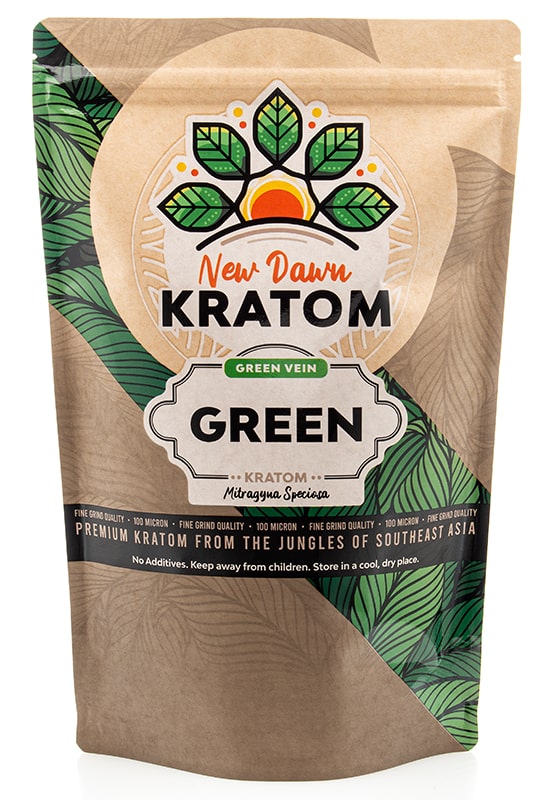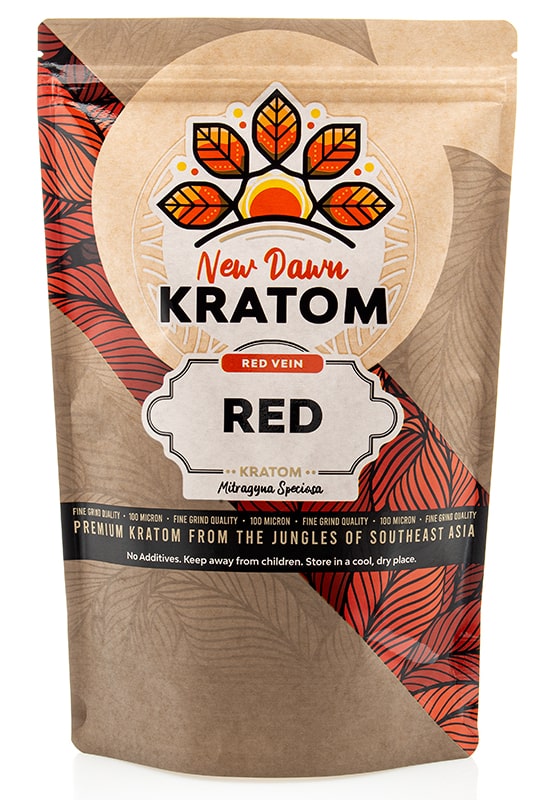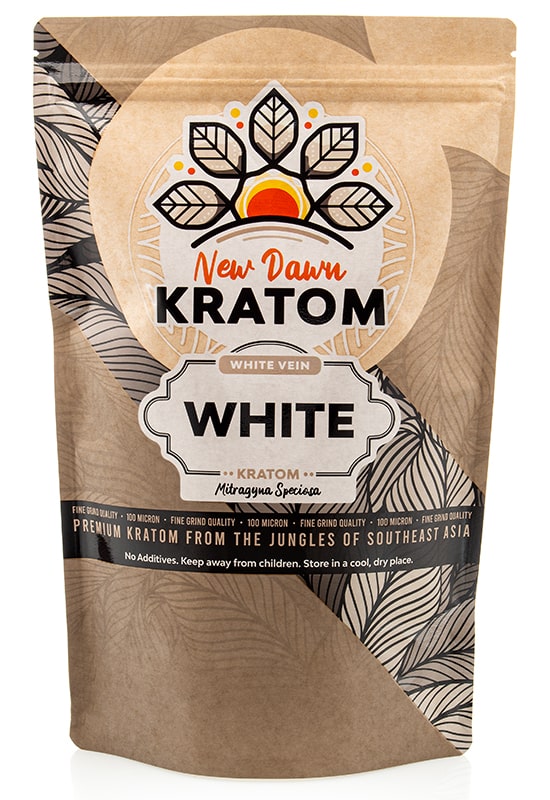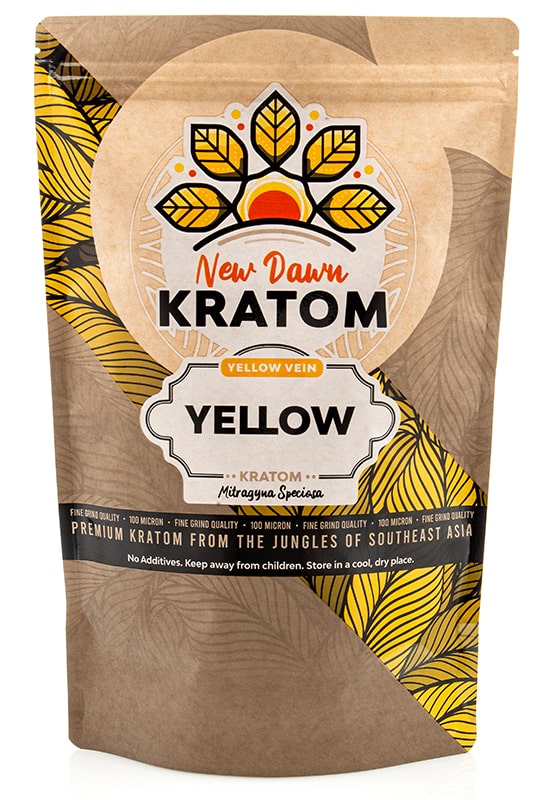Diving into the world of the kratom plant can be a complex endeavor, with the spectrum of strains often leaving novices and seasoned users in a whirl of confusion. Today, we are focusing on the fascinating debate that has been sparking conversations among kratom enthusiasts: yellow kratom vs. green kratom. Each has its unique characteristics, properties, and effects. Let’s unravel the mystery, compare their attributes, and establish the truths about these two in the vast landscape of kratom strains.
What Is Yellow Vein Kratom?
Yellow vein kratom, though a less common kratom strain, is often celebrated for its unique and diverse effects. Unlike red, white, or green strains, which are named after the color of the veins in their leaves, yellow kratom’s name comes from its distinctive coloration, which is a result of an intricate drying process.

Origins of Yellow Vein Kratom
The origins of yellow kratom remain a topic of ongoing debate and intrigue. The strain does not exist naturally in the wild, meaning that its distinct yellow hue isn’t due to natural maturation or specific environmental conditions, as with red, white, or green strains. Instead, yellow kratom’s characteristic color is a product of specialized cultivation and processing techniques.
One widely accepted theory is that yellow kratom is a blend of different kratom strains. Experienced growers and harvesters might mix various strains, usually red and green or white and green, in specific proportions and then subject the blend to a unique fermentation or drying process. This process changes the alkaloid profile of the leaves, leading to the development of the unique yellowish tint.
Another prevalent theory is that yellow kratom is not a blend but rather a product of an extended drying process. In this hypothesis, a single strain of kratom, most often red or green, is left to dry for an extended period or dried indoors for a portion of the drying cycle. This process might enhance certain alkaloids and lead to a change in color.
Regardless of the actual origin, most yellow kratom comes from the lush kratom trees of Southeast Asia, particularly Indonesia. The region’s tropical climate and rich soil provide an ideal environment for the growth of high-quality kratom.
While the mystery surrounding the origins of yellow kratom is certainly intriguing, it’s also a reminder that the processing techniques can significantly affect the profile and effects of the final product. Therefore, sourcing kratom from reputable and transparent vendors becomes paramount for users seeking a safe and consistent experience.

The Benefits of Yellow Vein Kratom
Yellow kratom is known for its unique and balanced effects profile. It tends to offer a blend of properties from both ends of the kratom spectrum, ranging from the energizing attributes of white strains to the calming effects of red ones. Here are some purported benefits associated with yellow vein kratom:
- Balanced Energy and Relaxation: Users often report that yellow vein kratom provides a balanced energy boost without the edginess associated with the more stimulating strains. At the same time, it can offer a sense of calm and relaxation, making it a popular choice for those seeking a strain that can enhance focus without causing overstimulation.
- Mood Enhancement: Many users claim that yellow vein kratom can elevate mood and enhance overall well-being. This mood-lifting effect can potentially contribute to increased motivation and positivity.
- Discomfort Relief: Some users turn to yellow vein kratom for its mild soreness-relieving properties. Though not as strong as red strains in this regard, yellow kratom may help to manage minor aches and discomfort.
- Improved Concentration: Yellow kratom is often associated with improved focus and concentration. Its balanced effects profile can lend itself well to tasks requiring sustained attention.
- Stress Relief: The calming properties of yellow kratom can help to create a sense of tranquility and ease, potentially beneficial for those dealing with stress.
Remember that individual experiences with yellow kratom can vary significantly due to numerous factors, such as dosage, personal biochemistry, and the specific strain of yellow kratom used.
Furthermore, while many users report these benefits, they are largely based on anecdotal evidence. Scientific research on kratom’s effects, particularly those of yellow strains, is still relatively limited and far from conclusive.

Yellow Kratom Vs. Green Kratom: A Comparison
Yellow and green kratom strains have distinctive origins, uses, benefits, and potential side effects. Below is a comprehensive comparison of these two unique strains:
Origin
Yellow Kratom: The origin of yellow kratom is somewhat enigmatic, but it is commonly accepted that this kratom strain results from specialized processing methods rather than growing naturally in the wild. It’s usually a product of an intricate fermentation process, prolonged drying, or blending of various kratom strains, often leading to its unique coloration. Most yellow kratom strains are sourced from Southeast Asia, specifically Indonesia.
Green Kratom: Green vein kratom comes from the leaves of the Mitragyna speciosa tree, where the veins in the leaves are green. This kratom strain is usually harvested from mature leaves in the middle of the tree’s growth cycle, balancing the effects of white and red strains.
Uses and Prominent Benefits
Yellow Kratom: Yellow kratom is known for offering a balance between the stimulating effects of white strains and the calming effects of red strains. It’s frequently used for mood enhancement, mild soreness relief, improved concentration, and increased focus. Some users also report that it can help with stress, providing a sense of calm and serenity.
Green Kratom: Green vein kratom, similar to yellow kratom, provides a balance between energy and relaxation. It’s often used for its stimulating effects, including increased energy and alertness. Green vein kratom is also well-known for improving mood and aiding focus. Some users find it helpful in managing aches and symptoms of stress.
Side Effects
Yellow Kratom: While side effects can vary widely among individuals, some users of yellow kratom have reported nausea, dry mouth, constipation, or other digestive issues. More severe effects, such as dependency and withdrawal symptoms, have been observed with high, frequent doses.
Green Kratom: Potential side effects of green vein kratom can also include nausea, dry mouth, constipation, and potential dependency with high doses. Some users have reported restlessness, particularly at higher doses due to its more stimulating effects.

Dosage
Yellow Kratom
Beginners: Start with 1 to 2 grams. Monitor the effects and consider increasing the dose gradually, if needed.
Moderate users: A dose of 2 to 4 grams is often recommended. This dosage is believed to offer a balance of yellow kratom’s effects without leading to excessive sedation or stimulation.
Experienced users: Doses of 4 to 5 grams are often used by individuals with a high tolerance for kratom. However, higher doses can increase the risk of side effects.
Green Kratom
Beginners: A starting dose of 1 to 2.5 grams is often recommended. This dose should provide a mild energy boost and increased focus without overstimulation.
Moderate users: A dose of 2.5 to 5 grams may be suitable. This dosage range should offer balanced effects with moderate stimulation and relaxation.
Experienced users: A dose of 5 to 8 grams may be used by those with a high tolerance. However, doses in this range can lead to significant sedation and a higher risk of side effects.

Red and White Kratom Strains
Here is a brief overview of other kratom strains you should know about:
Red Vein Kratom Strains
Red vein kratom gets its name from the reddish hue of the leaf veins harvested from a kratom tree. This type of kratom is widely recognized for its potent sedative and discomfort-relieving properties, making it a popular choice for those looking for relaxation or relieving effects. The red vein kratom strain is often harvested from mature kratom leaves and goes through a longer drying process, typically under UV light or sunlight, which is believed to enhance its soothing effects.
Some common types of red kratom include Red Bali, Red Maeng Da, and Red Borneo. Red Bali is often used for its relaxation and soreness-relief properties, while Red Maeng Da is recognized for its powerful energy boost.
White Vein Kratom Strains
White vein kratom gets its name from the white veins present in the kratom leaf at the time of harvest. Typically harvested from younger kratom leaves, white vein kratom strains are known for their energizing and mood-enhancing effects. White vein kratom goes through a shorter drying process, usually indoors without direct sunlight. The resulting product is commonly used by those seeking to improve focus, boost energy, or enhance mood.

Frequently Asked Questions
What is the main difference between yellow kratom vs. green kratom?
Yellow and green vein kratom strains differ mainly in their processing and effects. Yellow kratom is created through specialized processing techniques that result in a unique, balanced effects profile. Green kratom is directly harvested from kratom trees and is known for its balanced effects, providing moderate stimulation and relaxation.
Which kratom strain is stronger, yellow or green?
Neither strain is inherently stronger than the other, as the effects of kratom can vary widely based on the specific strain, dosage, and individual factors. However, yellow kratom is often reported to have a more balanced profile between energy and relaxation, while green vein kratom strains may lean more towards stimulation.
Conclusion
In the broad landscape of kratom, yellow and green strains offer a unique blend of effects that appeal to a diverse range of users. Yellow kratom, with its distinctive origin and balanced profile, brings together the stimulating and calming properties of kratom in a way that many find beneficial for mood enhancement and mild soreness relief. On the other hand, green kratom holds a strong reputation for improving focus and elevating mood.





